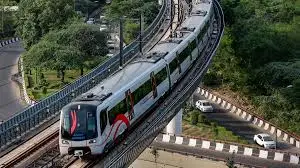Metro Railways Act amendment, parking and non-fare revenue: top officials recommend changes

Top officials have proposed important changes to the Metro Railways Act to improve metro rail systems across India. The focus is on better parking management and boosting non-fare revenue. These areas are key as metro networks grow and commuter needs change.
Why Amend the Metro Railways Act?
The Metro Railways Act, enacted in 2002, sets the rules for metro operations. But rapid urban growth and rising costs show the need to update the law. Officials say the Act must reflect today’s urban transport challenges and opportunities.
A main goal is to reduce reliance on fare revenue, which is limited by commuter affordability. Instead, metros should increase income from other sources such as parking fees, advertising, and commercial spaces.
Improving Parking Facilities
Parking near metro stations is a big issue. Good parking options encourage people to use the metro. Officials recommend clear rules for developing and managing parking lots, including multi-level garages.
They suggest:
- Using dynamic pricing based on demand and time.
- Integrating parking with digital payment systems.
- Coordinating with city authorities to ensure parking safety and availability.
These steps will ease traffic near stations, help commuters, and raise revenue for the metro.
Expanding Non-Fare Revenue
Non-fare revenue is crucial for the financial health of metro systems. Officials want the Act to allow metro agencies to earn more from:
- Leasing retail and commercial spaces.
- Selling advertising rights in stations and trains.
- Developing real estate on metro land.
- Providing value-added services like Wi-Fi and lounges.
This will create steady income and reduce the need for fare increases. It will also improve passenger amenities.
Benefits for Commuters and Cities
The changes could improve last-mile connectivity through better parking and transport links. Passengers will get more services and better facilities. Financially stronger metro corporations can expand networks faster. This keeps fares affordable for daily users.
Experts also want the Act to promote transit-oriented development (TOD). This means planning mixed-use urban areas around metro stations with homes, shops, and parks.
Next Steps
The Ministry of Housing and Urban Affairs is working with states and metro bodies to finalize the amendments. They are consulting commuters, planners, and legal experts. The goal is to balance flexibility, commuter rights, and environmental concerns.
After this, the changes will go to Parliament for approval. This will be a key step in modernizing India’s metro railways.
Summary:
The Metro Railways Act amendments aim to update the law with better parking management and new ways to earn non-fare revenue. These changes will help metros grow sustainably while keeping fares fair and passengers happy.






